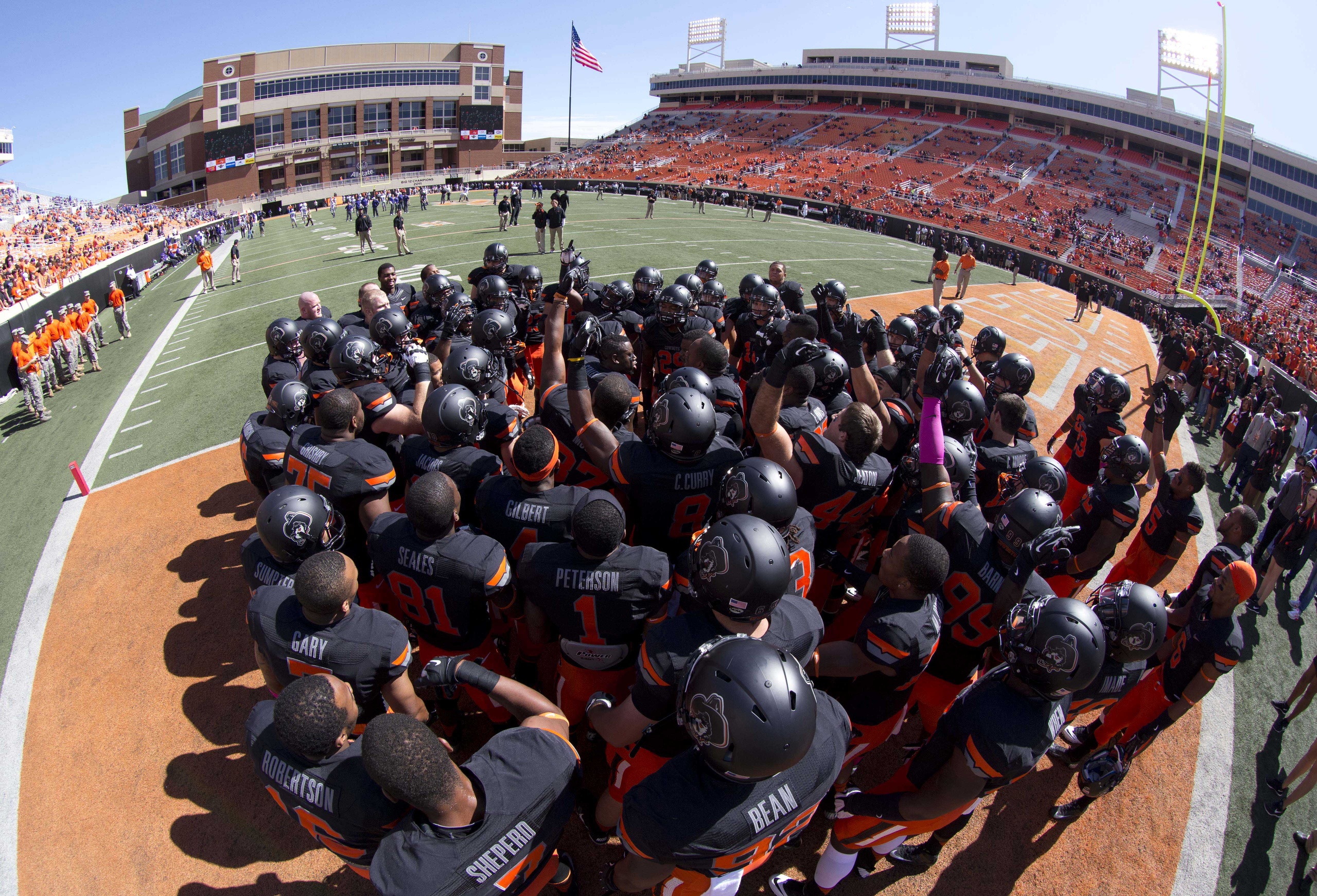Football
The problem with thinking OSU isn’t playing fast on offense
The problem is that maybe OSU actually IS playing fast.
The problem with thinking OSU isn’t going fast on offense is that it kind of actually is (and isn’t at the same time…weird, I know, we’ll get into it though).
Gina Mizell wrote a piece for the Oklahoman today about how “So far this season, though, that plan for speed hasn’t exactly transpired as a consistent, full-throttle machine.”
I initially agreed (and still kind of do). This isn’t the high-octane offense that rolls up and down the field that we’re used to.
But then I started thinking about it. They haven’t exactly been that slow either. Hmm…I wonder what their time of possession per play is compared to years past?
I did a post before the season started about snap speed progression and how the 2011 team was the fastest of the Gundy era. I thought this team would be faster and you know what?
So far it is (kind of).
Let’s take a look.
Time of possession per play
2007 — 23.69 seconds
2008 — 26.76 seconds
2009 — 27.87 seconds
2010 — 21.99 seconds
2011 — 20.78 seconds
2012 — 21.03 seconds
2013 — 20.07 seconds
Thus far this is the fastest team in time of possession per play Mike Gundy has ever had. In fact, there have only been seven college football teams that have broken 20 seconds in the last six years.
Now, we don’t have a great way in college football to measure time from end of one play to the start of the next because nobody is sitting there with a stopwatch counting. So this is kind of the best we can do and, I admit, it’s not perfect. There are potential issues with the data.
What are the things that can artificially inflate (or in this case, deflate) your pace of play numbers? Namely, first downs and incomplete passes because both stop the clock — also it doesn’t account for how much ground you cover, which is probably a better measure of speed (we’ll get to that).
If a team goes three and out on three incompletions every possession and each play takes four seconds, their time of possession per play is going to be a mind-boggling 4.0 seconds. But they’re also going to suck at football. This team hasn’t sucked though and it has completed just 1% fewer passes than the 2012 team.
Just for fun let’s compare the last three years in terms of percentage of clock-stopping plays (incompletions and first downs [1. I’m not taking into account runs that go out of bounds becasue a) I don’t know how to incorporate them and b) I don’t even think you can incorporate them…let’s keep this simple]) compared to total plays:
2011 — 51%
2012 — 52%
2013 — 51%
So 51% of OSU’s total plays in 2013 have been clock-stopping (same as 2011) and they’ve still averaged right at 20 seconds per play.[1. Also, for good measure, OSU is averaging 75 plays a game, 76 in 2011, and 78 in 2012. Very similar.] Looking at the time of possession per play numbers you would expect 2012’s to be a bit faster than they are because they had more clock-stopping plays.
Look, I’m not suggesting that Gina is wrong in her assessment that when OSU has an incompletion it’s kind of slow about getting a new play in.[1. And, to be fair, this isn’t a shot at her by any means…just a look at the numbers.] I think we’ve all seen that — and whether you take three seconds or 38 seconds to snap the ball after an incompletion, that’s not going to change the numbers above. We can’t account for that because, again nobody is sitting there with a stopwatch.
And there isn’t the rhythm we’ve seen in the past. Your other argument against them being fast (the one I mentioned above) is that they’ve averaged 100 fewer yards per game than the last two seasons. If speed = distance divided by time then this is how many yards per second of possession the last three teams have averaged:
2011 — .35
2012 — .33
2013 — .30
Or yards per minute of possession:
2011 — 20.8
2012 — 20.0
2013 — 17.8
Things are more disjointed, for sure. These numbers tell me they haven’t been covering as much ground in as little time as the Weeden team (or even last year’s team did).
But don’t discredit what Walsh and Co. have done this season — they’ve been going faster than you think — and what they have the ability to do when they’re rolling like they were on Saturday during that game-winning drive.

-
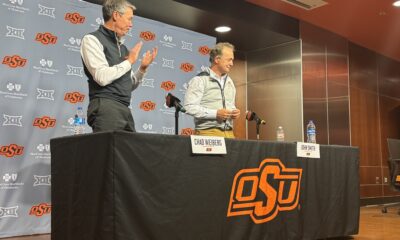
 Wrestling5 days ago
Wrestling5 days agoThe Top 5 Quotes from John Smith’s Retirement News Conference
-
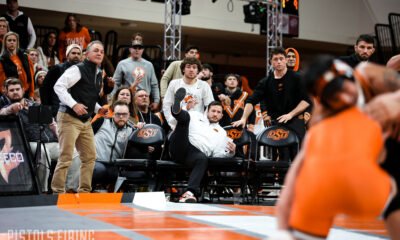
 Wrestling3 days ago
Wrestling3 days agoOSU Wrestling: How John Smith Started a Tradition of Late-Night Workouts For Cowboys Seeking World Glory
-
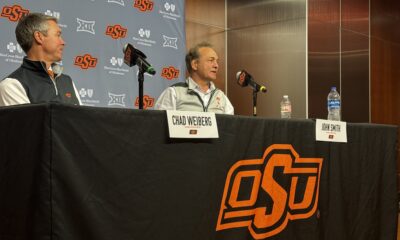
 Wrestling4 days ago
Wrestling4 days agoOSU Wrestling: The Impact John Smith Had on His Final Boss, Chad Weiberg
-
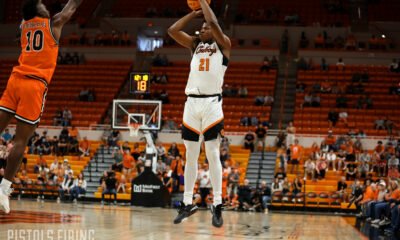
 Hoops5 days ago
Hoops5 days agoJustin McBride Enters Transfer Portal

